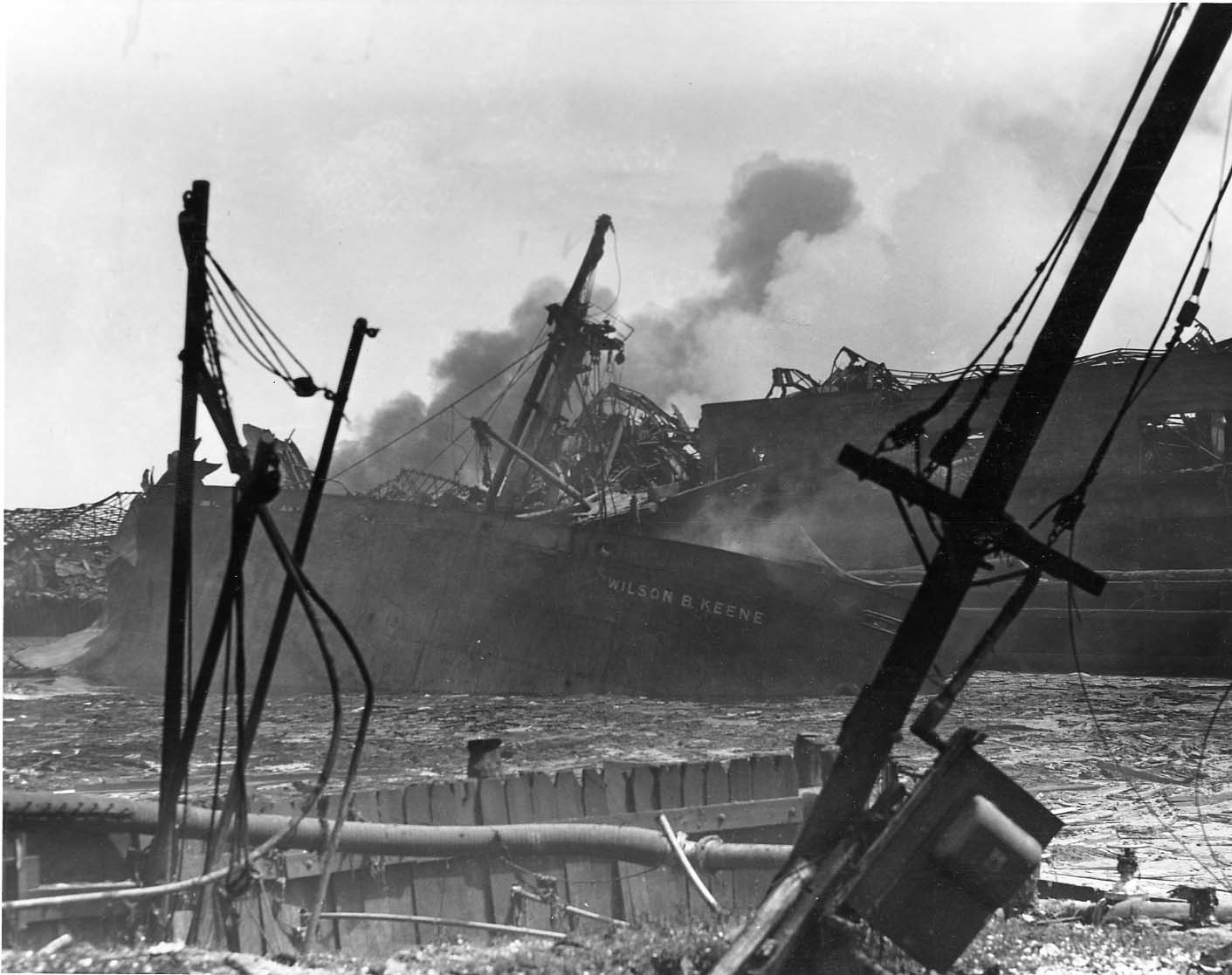When the Mississippi River floods of 1882 forced thousands from their homes, Corps of Engineers steamboats ferried scores of people to safety and delivered tons of desperately needed supplies to stranded refugees. That effort marked the beginning of the Corps' formal disaster recovery efforts. In the decades that followed, the Corps of Engineers responded to dozens of other disasters including the San Francisco earthquake in 1906 and the Texas City explosion in 1947. In each case Corps of Engineers personnel were among the first to the scene to help care for the injured and protect lives and property.
The Corps of Engineers received its first federal disaster recovery assignment in February 1882 when heavy floods along the Mississippi River forced thousands of people to flee their homes and seek refuge on levees and hilltops. Although Congress provided $100,000 for recovery supplies, the Army Quartermaster Corps could not deliver the desperately needed food and tents to the shivering refugees. Chief of Engineers Brig. Gen. Horatio G. Wright proposed that Corps boats could deliver the supplies but noted that the vessels could not be used for disaster recovery without congressional authorization. Congress pushed through a disaster recovery bill that very day, and soon engineer vessels were steaming up and down the river, plucking people off levees and rooftops and dispensing hundreds of tons of supplies to the needy. Over the next six weeks Corps of Engineers steamboats, snagboats, and towboats delivered hundreds of tons of desperately needed supplies to communities all along the Mississippi.
 |
|
 |
A break in the levee along the southern Mississippi River in 1882.
Harper's Weekly. |
|
San Francisco, California, following the April 1906 earthquake and fires.
CEHO |
| |
|
|
In 1906 the Corps called on its engineer troops to assist with disaster recovery efforts following the San Francisco, California, earthquake. The massive quake—measuring 8.3 on the Richter scale—struck the city in the early hours of the morning of 18 April. Roused from their beds at nearby Fort Mason, 150 men of the First Battalion of Engineers were the first troops to enter San Francisco and quickly began patrolling the devastated city to keep order.
Soon after the earthquake subsided a new danger emerged; dozens of fires were burning across the city, and with the water mains broken, the city’s firefighters were powerless to stop them. Fleeing both the earthquake and the subsequent conflagration, thousands of frightened city residents descended on Fort Mason, where engineer troops worked around the clock to feed and shelter the refugees. By 19 April fires in the city were burning out of control, and the engineers were forced to undertake a new and dangerous mission: blowing up hundreds of buildings to establish a firebreak to prevent the flames from consuming the western part of the city. Ultimately the firebreak held, and two days later the San Francisco fires were finally brought under control.
On 16 April 1947 the Corps responded to a tremendous explosion in the port of Texas City, Texas. Following a shipboard fire, a freighter loaded with 2,400 tons of ammonium nitrate exploded with a blast so intense that vibrations were felt sixty-five miles away. Fires and secondary explosions soon broke out all along the waterfront, and sixteen hours later a second freighter loaded with ammonium nitrate also exploded. The two explosions turned Texas City into an inferno, killing five hundred people and injuring thousands more.
Immediately after the first explosion, Galveston District Engineer Col. D. W. Griffiths rushed to Texas City and coordinated recovery operations from City Hall. The first task was to get the fires under control and evacuate the area. During that initial frenzy of activity, Corps personnel helped remove the dead and injured, drove emergency vehicles, set up kitchens for relief workers, patrolled the harbor, and maintained an emergency communications network. Colonel Griffiths also asked the Fourth Army for reinforcements, and as other Army units arrived, Corps personnel helped integrate the incoming units with local recovery efforts already underway.
Today the Corps retains its mission to respond to disasters—be they floods, hurricanes, tornadoes, or manmade emergencies—and to assist with rescue, relief, and recovery efforts alongside other federal, state, and private organizations.
The Wilson B. Keene was down by the stern in the harbor, after the Highflower exploded while docked next to her.
Fragments of the two ships that disintegrated were scattered for blocks over Texas City, Texas. 1947. U.S. Army Photo.

For more on the Corps of Engineers' emergency operations mission, see the Office of History publications Situation Desperate (Origins to 1950) and Destruction Imminent (1950 to 1979).
* * *
October 2001. No 36.